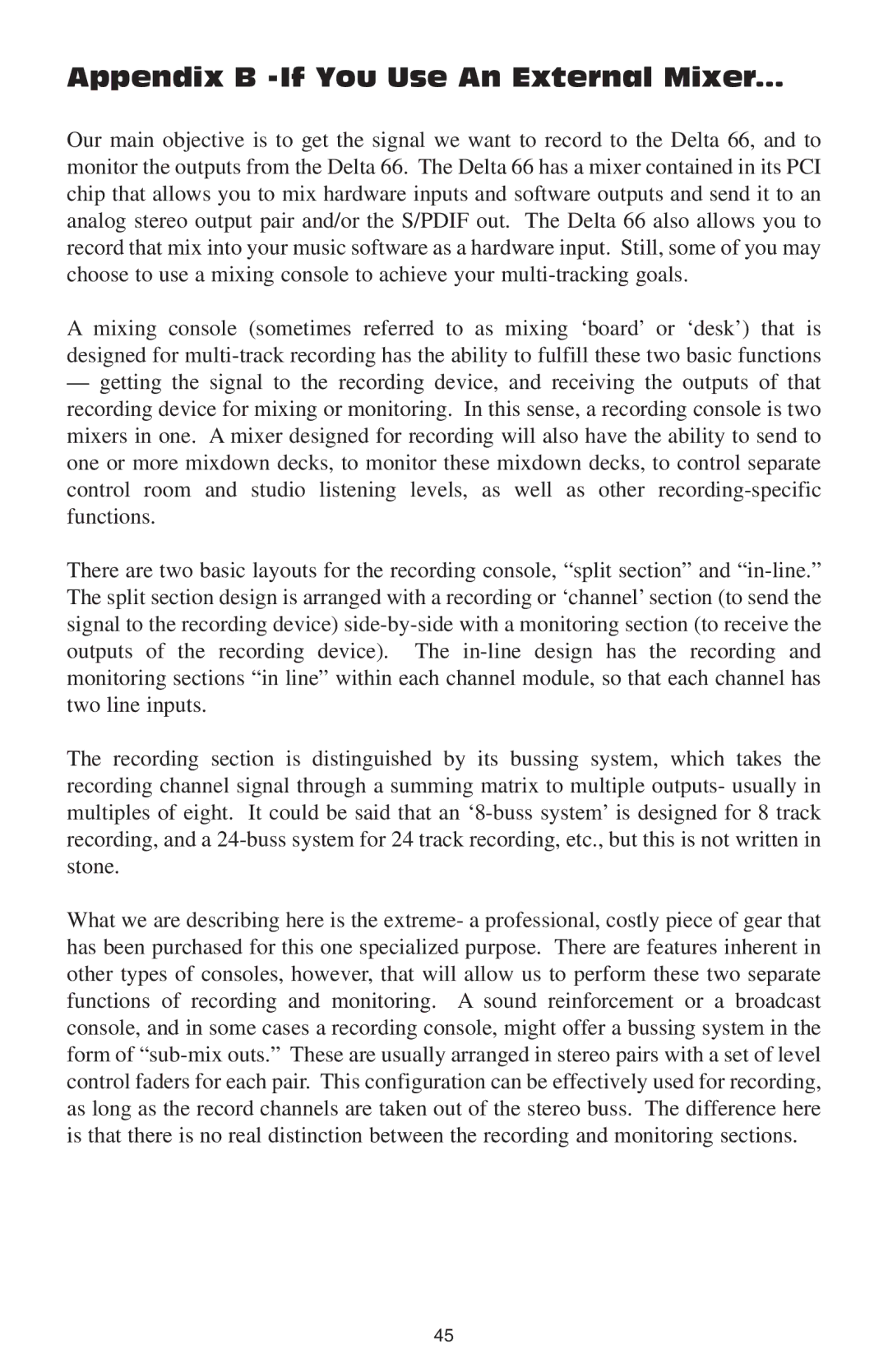Appendix B -If You Use An External Mixer...
Our main objective is to get the signal we want to record to the Delta 66, and to monitor the outputs from the Delta 66. The Delta 66 has a mixer contained in its PCI chip that allows you to mix hardware inputs and software outputs and send it to an analog stereo output pair and/or the S/PDIF out. The Delta 66 also allows you to record that mix into your music software as a hardware input. Still, some of you may choose to use a mixing console to achieve your
A mixing console (sometimes referred to as mixing ‘board’ or ‘desk’) that is designed for
—getting the signal to the recording device, and receiving the outputs of that recording device for mixing or monitoring. In this sense, a recording console is two mixers in one. A mixer designed for recording will also have the ability to send to one or more mixdown decks, to monitor these mixdown decks, to control separate control room and studio listening levels, as well as other
There are two basic layouts for the recording console, “split section” and
The recording section is distinguished by its bussing system, which takes the recording channel signal through a summing matrix to multiple outputs- usually in multiples of eight. It could be said that an
What we are describing here is the extreme- a professional, costly piece of gear that has been purchased for this one specialized purpose. There are features inherent in other types of consoles, however, that will allow us to perform these two separate functions of recording and monitoring. A sound reinforcement or a broadcast console, and in some cases a recording console, might offer a bussing system in the form of
45
